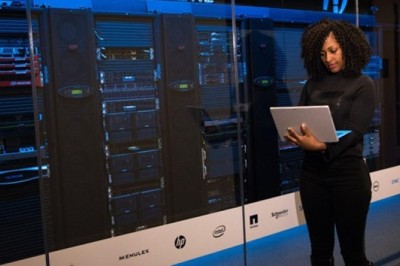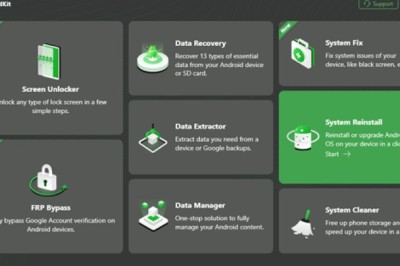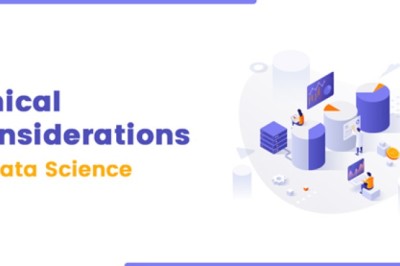views
Data has become a powerful asset for businesses across various industries, but raw data, in its unprocessed form, can often resemble a chaotic puzzle! This puzzle requires careful assembly before it can provide meaningful insights. This is where the crucial process of data preprocessing comes into play.
Explore the significance of data preprocessing in this article, including its key steps and its role in transforming raw data into actionable insights. You will also learn more about real-world examples across different sectors to illustrate the impact of effective data preprocessing.
Understanding Data Preprocessing
Data preprocessing is a sequence of procedures designed to clean, structure, and convert raw data into a format that is conducive to analysis. This process holds paramount importance as the quality of insights obtained from data analysis is intricately tied to the quality of the foundational data. The key steps in data preprocessing include data cleaning, data transformation, data integration, and data reduction.
- Data Cleaning: This step involves identifying and rectifying errors, inconsistencies, and missing values in the dataset. Cleaning ensures that the data is accurate and reliable, laying a solid foundation for subsequent analysis.
- Data Transformation: Data may exist in different formats or scales. Data transformation includes normalizing data, converting categorical variables into numerical formats, and handling outliers. This step ensures that the data is uniform and suitable for analysis.
- Data Integration: In many cases, data is sourced from multiple locations or systems. Integration involves combining datasets to provide a comprehensive view, enabling a holistic analysis.
- Data Reduction: Large datasets can be computationally intensive and may contain redundant information. Data reduction techniques, such as aggregation or sampling, help streamline the dataset without sacrificing critical information.
Data Preprocessing in Various Industries
The impact of data preprocessing extends far and wide, influencing decision-making processes in numerous industries. Below, explore how this critical step in data analysis plays a pivotal role in shaping insights and strategies in different sectors:
Healthcare
In healthcare, preprocessing health records and clinical data is crucial for disease prediction, patient monitoring, and personalized treatment plans. Cleaning noisy medical data, transforming diverse data sources, and integrating patient records contribute to more accurate diagnostic models.
Retail
Retailers leverage data preprocessing to analyze customer purchasing behavior. Cleaning and transforming data from sales transactions helps businesses identify trends, optimize inventory management, and devise effective pricing strategies.
Fintech
The fintech sector exemplifies the importance of data preprocessing in harnessing the power of financial data for strategic decision-making. Financial transactions generate massive datasets, and effective fraud detection requires preprocessing techniques to identify patterns indicative of fraudulent activities.
Additionally, banks and lending institutions heavily rely on credit scoring models to assess the creditworthiness of individuals. Data preprocessing plays a vital role in preparing this historical financial data for analysis. This includes cleaning credit reports, transforming diverse financial indicators into a standardized format, and integrating data from various sources to form a comprehensive credit profile.
Today, businesses involved in the fintech sector rely on data preprocessing and analysis to remain competitive in their industry. If your business is involved in fintech, you can easily explore data preprocessing techniques in collaboration with various fintech agencies.
Manufacturing
In manufacturing, data preprocessing is pivotal in optimizing production processes. Cleaning sensor data from machinery, transforming it into a standardized format, and integrating it with supply chain data contribute to predictive maintenance and efficient resource utilization.
Agriculture
Precision farming relies heavily on data analytics for optimizing crop yields. Data preprocessing is essential for cleaning and transforming diverse data types, including weather patterns, soil conditions, and crop health indicators. Integrating these datasets allows farmers to make informed decisions about planting, irrigation, and pest control, ultimately improving overall farm efficiency.
Energy
The energy sector utilizes data preprocessing to enhance the efficiency of power generation and distribution. For example, preprocessing sensor data from power grids helps identify potential faults and inefficiencies. By cleaning and transforming this data, energy companies can predict equipment failures, schedule maintenance proactively, and minimize downtime.
Telecommunications
Telecommunications companies deal with massive datasets related to call records, network performance, and customer interactions. Data preprocessing enables these companies to clean and transform call data, identify patterns in network traffic, and integrate information from various sources. This helps in optimizing network infrastructure, improving service quality, and predicting potential network issues.
Transportation
In the transportation industry, data preprocessing is instrumental in optimizing logistics and improving traffic management. By cleaning and transforming data from GPS devices, traffic cameras, and sensors on vehicles, transportation companies can analyze traffic patterns, optimize routes, and reduce fuel consumption. Integration of data from various sources aids in creating comprehensive transportation models for better decision-making.
Real Estate
Real estate relies on data preprocessing for market analysis, property valuation, and investment decisions. Cleaning and transforming data from property listings, market trends, and economic indicators help real estate professionals identify investment opportunities, set competitive pricing, and understand the dynamics of local housing markets.
Environmental Monitoring
Environmental monitoring involves processing data from various sensors to track air quality, water quality, and climate patterns. Data preprocessing is essential for cleaning and transforming this information, enabling scientists and policymakers to identify trends, assess environmental risks, and formulate effective conservation strategies.
Conclusion
Data preprocessing serves as the cornerstone for unlocking the true potential of raw data. From fraud detection in fintech to personalized healthcare solutions, the role of preprocessing is evident across diverse sectors. As industries continue to embrace data-driven decision-making, understanding and implementing effective data preprocessing techniques will be essential for deriving actionable insights and gaining a competitive edge in today's dynamic business landscape.
























Comments
0 comment